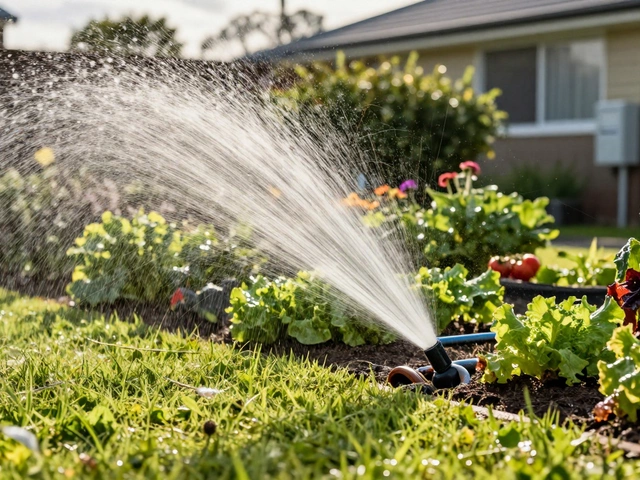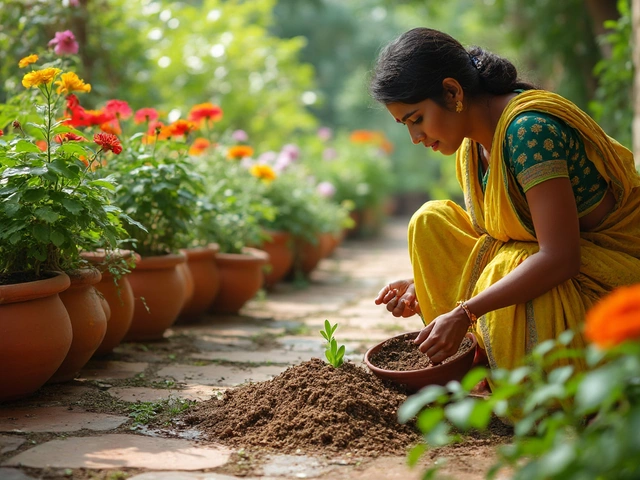Lotus Care: Easy Steps to Grow Healthy Lotus Plants
Ever wondered why some lotus ponds look perfect while yours struggles? The good news is that lotus isn’t a mystery plant. With the right water, soil, and a little attention, you can enjoy big, glossy leaves and stunning flowers.
Water and Light: The Basics
Lotus loves sunlight. Aim for at least six hours of direct sun each day. If you’re growing in a container, place it where the morning sun hits first. Too much shade means weak stems and fewer blooms.
Water quality matters more than you think. Lotus thrives in warm, still water that's at least 2‑3 inches deep. Use rainwater or let tap water sit for 24 hours to let chlorine evaporate. Change the water every two weeks to keep it fresh and oxygen‑rich.
Soil, Planting, and Feeding
Don’t use regular garden soil. Lotus needs a heavy, clay‑rich mix that holds moisture but drains slowly. A good blend is one part garden loam, one part sand, and one part organic compost. Fill the container about an inch below the rim, then gently place the lotus rhizome on the soil surface and cover it lightly.
Feeding is simple. In the growing season (April‑September), add a handful of slow‑release fertilizer designed for aquatic plants every month. Avoid nitrogen‑rich fertilizers; they can cause leaf‑spot diseases.
Pruning keeps the plant tidy and directs energy to new growth. Remove yellowing leaves as soon as you see them – they’re a sign of stress. Trim spent flower stalks back to the base once the blooms fade. This prevents seed formation, which can drain the plant’s energy.
Watch for pests like aphids or water‑loving insects. A gentle spray of soapy water or neem oil usually does the trick. If you notice fungal spots, increase water circulation and cut back on fertilizer.
Temperature is another key factor. Lotus likes water between 20‑30 °C (68‑86 °F). In cooler climates, move the container to a sunny greenhouse or use a floating heater. In hot summers, provide partial shade in the hottest part of the day to avoid leaf scorch.
When it’s time to divide your lotus, wait until the plant has produced multiple rhizomes, usually after two‑three years. Gently lift the plant, cut the rhizomes into pieces with a clean knife, and replant each segment in fresh soil.
With these simple steps – plenty of sun, clean warm water, proper soil, light feeding, and regular pruning – your lotus will grow strong and bloom year after year. Give it the basics, watch it thrive, and enjoy the calm beauty of a thriving lotus pond right in your backyard.
Lotus Lifespan: How Long Does a Lotus Really Live?
Curious about how long a lotus lives? This article breaks down everything you need to know about the lotus lifespan, straight from gardening experience in India. You’ll get insights on how long these flowers bloom, what affects their life, and tips to make them last longer in your pond or pot. Get ready to learn plenty of practical tips about growing and keeping lotus thriving in your home garden. Perfect for anyone wanting beautiful lotus flowers year after year.
About
Flower Gardening
Latest Posts


Smart Strategies for Sustainable Gardening
By Alden Thorne Mar 27, 2025

How Much Rice Does 1 Cup Make? Unpacking Dry to Cooked Ratios for Perfect Meals
By Alden Thorne Jul 20, 2025

Can You Grow Rice in America?
By Alden Thorne Feb 28, 2025

